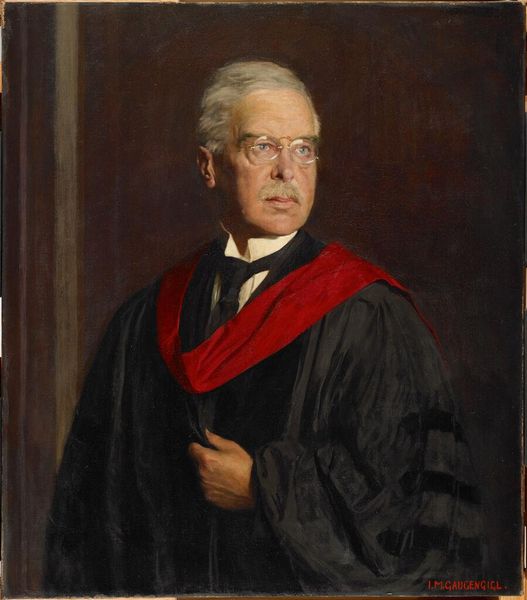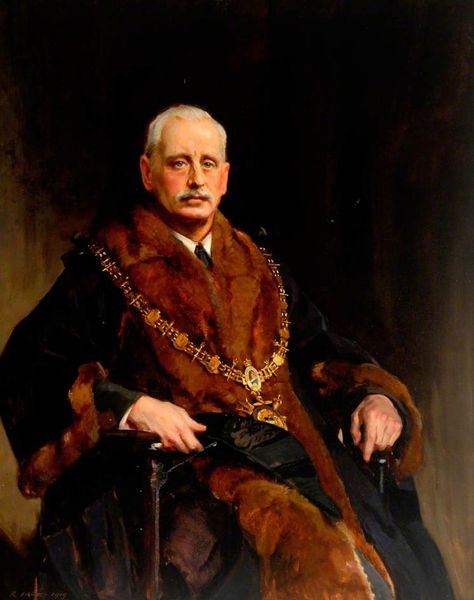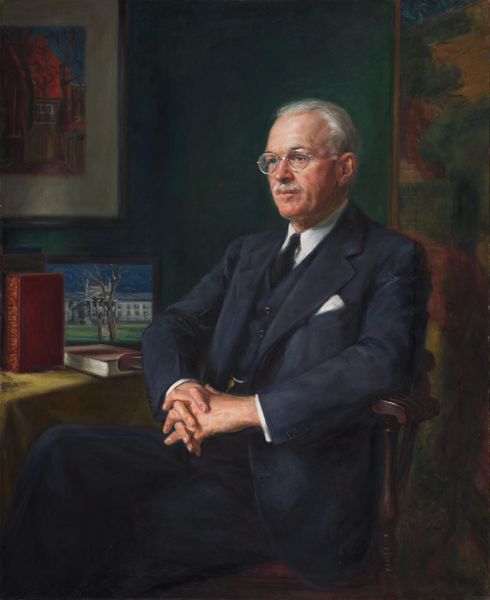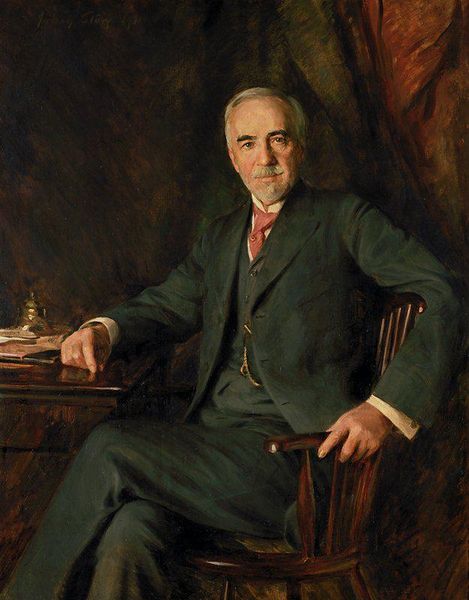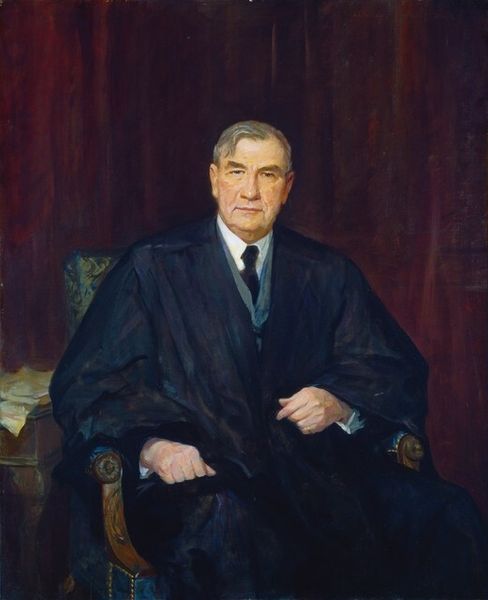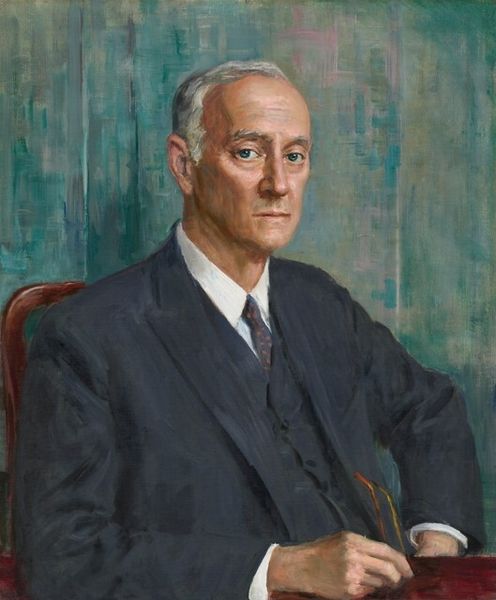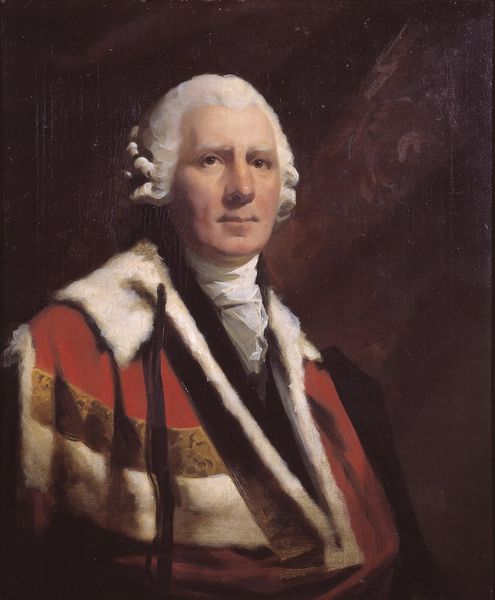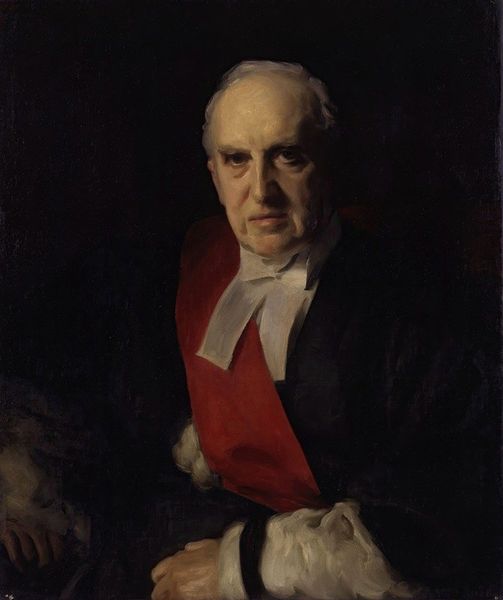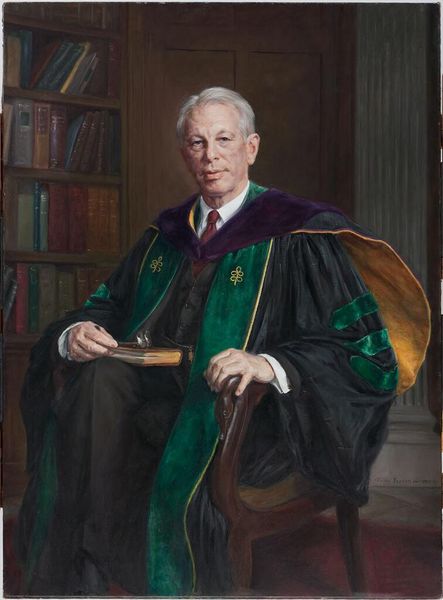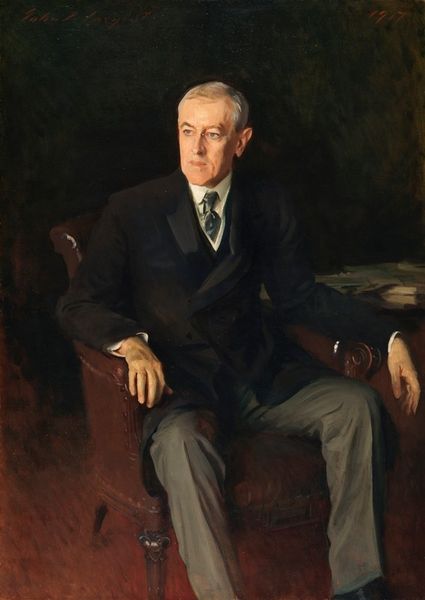
Copyright: Public Domain: Artvee
Editor: We're looking at a portrait of Frank Billings Kellogg by Philip Alexius de László, painted in 1925, using oil paints. It strikes me as a very formal, almost imposing image. What do you see in the way it's composed? Curator: Primarily, I am drawn to the juxtaposition of color and texture. The vibrant, almost theatrical red of the robe acts as a foil to the muted tones of the subject's face and the somber black of his suit. Note how de László employs impasto in the rendering of the robe, creating a tangible sense of depth and volume, which contrasts with the smoother handling of the facial features. It's a dialogue between the surface and the underlying structure. Editor: So, you’re focusing on how the artist has used the medium itself, the paint, to create a sense of drama? Curator: Precisely. The way the light interacts with the textured surface of the robe is crucial. It’s not merely a depiction of a garment, but a play of light and shadow, form and void. Observe, too, the compositional balance; the placement of the figure within the frame, the diagonal sweep of the robe leading the eye from the upper right to the lower left, all contribute to the painting's overall stability and visual interest. Editor: That's a good point about the balance, I hadn't considered that before. Thanks for breaking that down! Curator: It’s through careful analysis of these formal elements that we begin to unlock the inherent qualities of the artwork. There is more to be discovered through pure observation. Editor: I will look closer from now on.
Comments
No comments
Be the first to comment and join the conversation on the ultimate creative platform.
